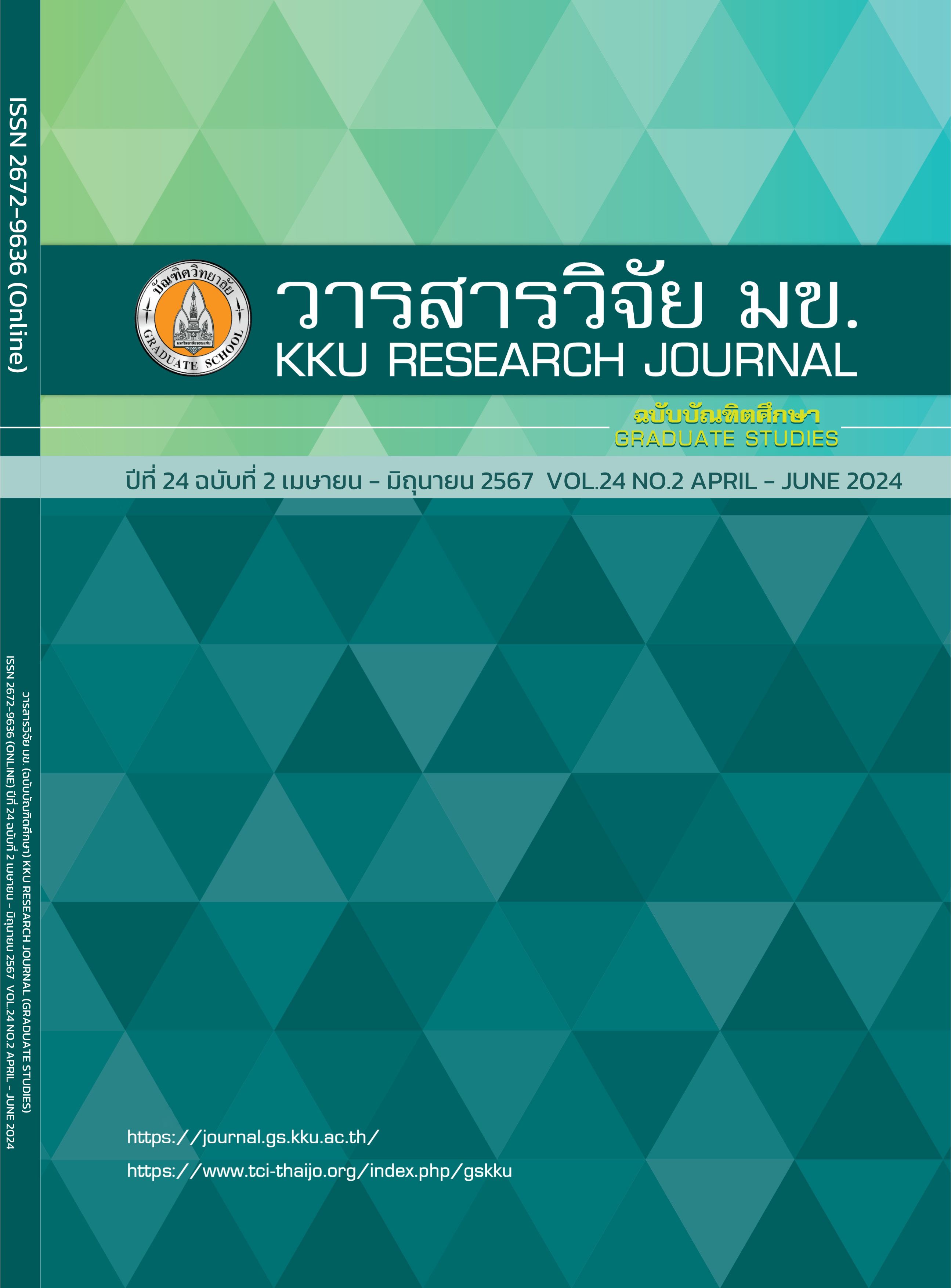Color and Organic Removal of Resin Regeneration Wastewater from White Sugar Production Process Using Zero Valent Iron and Persulfate
Keywords:
Melanoidin, Persulfate radical, Zero valent ironAbstract
Resin regeneration spent wastewater (RRW) from white sugar production contain salt which can be recovered and reused. However, the wastewater also has high organic and color from melanoidin which leads to membrane fouling during brine recovery. This research investigated the removal of organic and color of RRW using persulfate based advanced oxidation process with zerovalent iron powder (ZVIP) to generate SO4•- for oxidizing organics. The effect of temperature on the reaction of persulfate (PS) as well as ratio of ZVIP/PS were examined. The results at high temperature (70°C) showed superior TOC removal. At the best condition (PS 5 mg/L), TOC and color removal were 46% and 94%, respectively. This PS concentration (5 mg/L) was chosen to study the effect of iron concentration. The ratio of ZVIP:PS at 0.01 g/L:5 g/L gave the highest TOC removal of 47%. It was clear that increasing temperature provided better TOC removal. However, adding iron provided a small increase of TOC removal and may dissolve and added more color to the water. Therefore, the result of this work showed that only PS alone may be sufficient for TOC and color removal.
References
Cartier S, Theoleyre MA, Decloux M. Treatment of sugar decolorizing resin regeneration waste using nanofiltration. Desalination, 113(1), 7-17. 1997.
Deng J, Shao Y, Gao N, Deng Y, Tan C, Zhou S. Zero-valent iron/persulfate (Fe0/PS) oxidation acetaminophen in water. International Journal of Environmental Science and Technology, 11(4), 881-890. 2014.
Guan Y, Ma J, Li X, Fang J, Chen L. Influence of pH on the formation of sulfate and hydroxyl radicals in the UV/Peroxymonosulfate System. Environmental Science & Technology, 45(21), 9308-9314.
Wang J, Wang S. Activation of persulfate (PS) and peroxymonosulfate (PMS) and application for the degradation of emerging contaminants. Chemical Engineering Journal, 334, 1502-1517. 2018.
Graça CAL, Fugita LTN, de Velosa AC, Teixeira ACSC. Amicarbazone degradation promoted by ZVI-activated persulfate: study of relevant variables for practical application. Environmental Science and Pollution Research, 25(6), 5474-5483. 2018.
Weng C, Tao H. Highly efficient persulfate oxidation process activated with Fe0 aggregate for decolorization of reactive azo dye Remazol Golden Yellow. Arabian Journal of Chemistry, 11(8), 1292-1300. 2018.
Karim AV, Jiao Y, Zhou M, Nidheesh PV. Iron-based persulfate activation process for environmental decontamination in water and soil. Chemosphere, 265, 129057. 2021.
Giannakis S, Lin K A, Ghanbari F. A review of the recent advances on the treatment of industrial wastewaters by sulfate radical-based advanced oxidation processes (SR-AOPs). Chemical Engineering Journal, 406, 127083. 2021.
Li Z, Lowry GV, Fan J, Liu F, Chen J. High molecular weight components of natural organic matter preferentially adsorb onto nanoscale zero valent iron and magnetite. Science of the Total Environment, 628-629, 177–185. 2018.
Yang S, Wang P, Yang X, Shan L, Zhang W, Shao X, et al. Degradation efficiencies of azo dye Acid Orange 7 by the interaction of heat, UV and anions with common oxidants: Persulfate, peroxymonosulfate and hydrogen peroxide. Journal of Hazardous Materials, 179(1–3), 552–558. 2010.
Deng Y, Ezyske CM. Sulfate radical-advanced oxidation process (SR-AOP) for simultaneous removal of refractory organic contaminants and ammonia in landfill leachate. Water Research, 45(18), 6189-6194. 2011.
Fagier MA, Ali EA, Tay KS, Abas MRB. Mineralization of organic matter from vinasse using physicochemical treatment coupled with Fe2+-activated persulfate and peroxymonosulfate oxidation. International Journal of Environmental Science and Technology, 13(4), 1189-1194. 2016.
Downloads
Published
Issue
Section
License
Copyright (c) 2024 KKU Research Journal (Graduate Studies)

This work is licensed under a Creative Commons Attribution-NonCommercial-NoDerivatives 4.0 International License.



